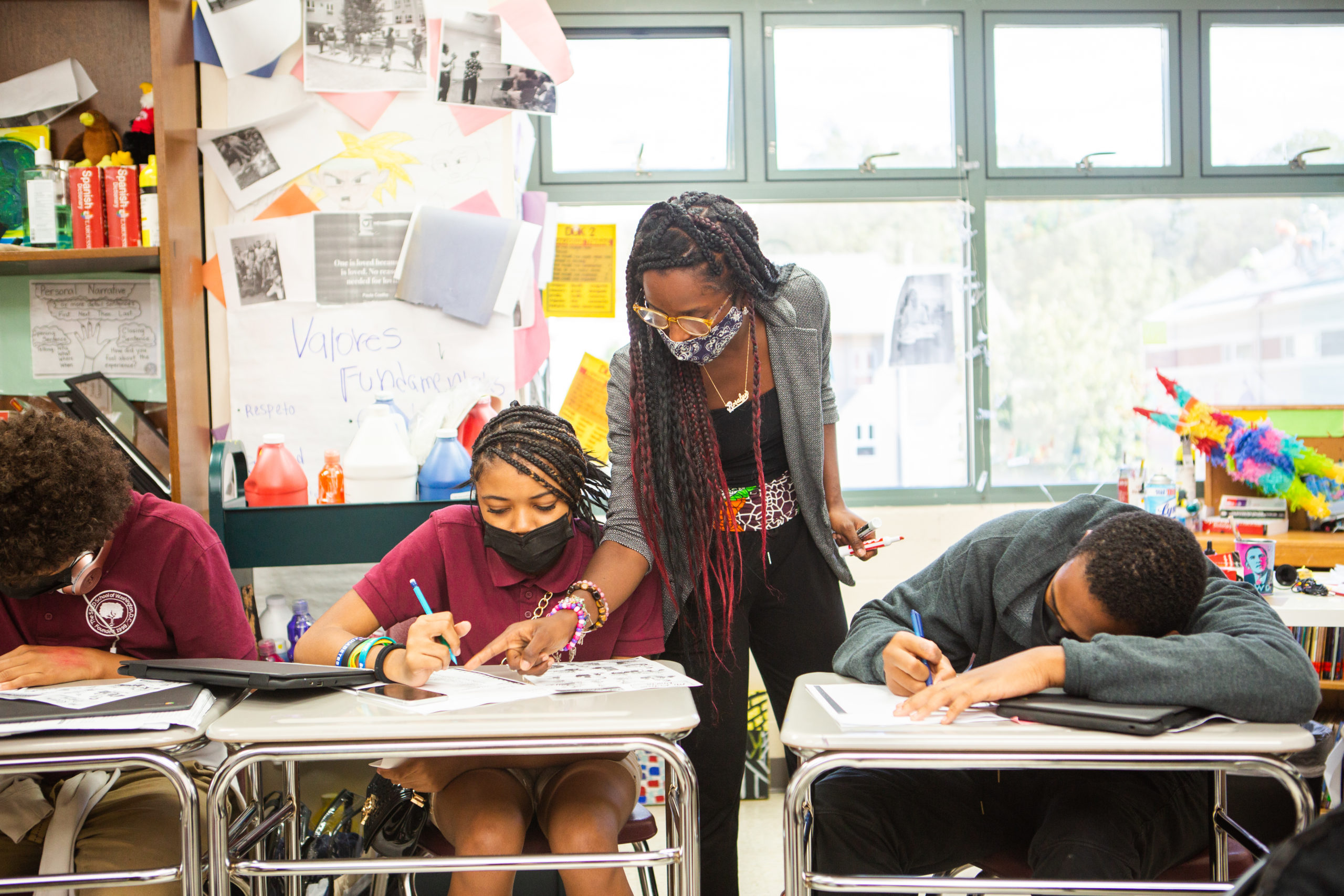

On April 5, 2023, Director of Policy and Research Emilia Calma testified during the FY2024 budget oversight hearing on education agencies before the Committee of the Whole. The testimony focused on findings on OST capacity across the District and how it compares to where students live and go to school. The testimony is based on a D.C. Policy Center report, Needs assessment of out-of-school time programs in the District of Columbia. You can read her testimony below, or download a PDF copy.
The D.C. Policy Center has worked with DME and the OST office, and in April, will release a comprehensive report on out of school time (OST) programs in the District of Columbia. The report describes the current landscape of OST programs, the number of available spots for public school students (both DCPS and public charter schools), and whether those spots meet the needs of students and families in the District.
Since 2017, the District has expanded OST capacity significantly.1 OST program capacity was particularly strong for elementary and middle school afterschool programs, and programs were most frequently located in the wards in which public school students live and go to school (Wards 8, 7, 4, and 5). By our estimation, there were approximately 150 providers offering 474 subsidized afterschool and summer OST programs in school year 2021-22. Providers collectively offered 30,360 afterschool seats in OST programs at the PK3 through grade 8 level, and 6,090 seats at the high school level. In addition, there were 16,434 seats in summer programs for elementary and middle school students (24 percent of enrollment), and 15,044 seats for high school students (80 percent of enrollment), of which, approximately 8,350 (45 percent of enrollment) were seats in the MBSYEP.
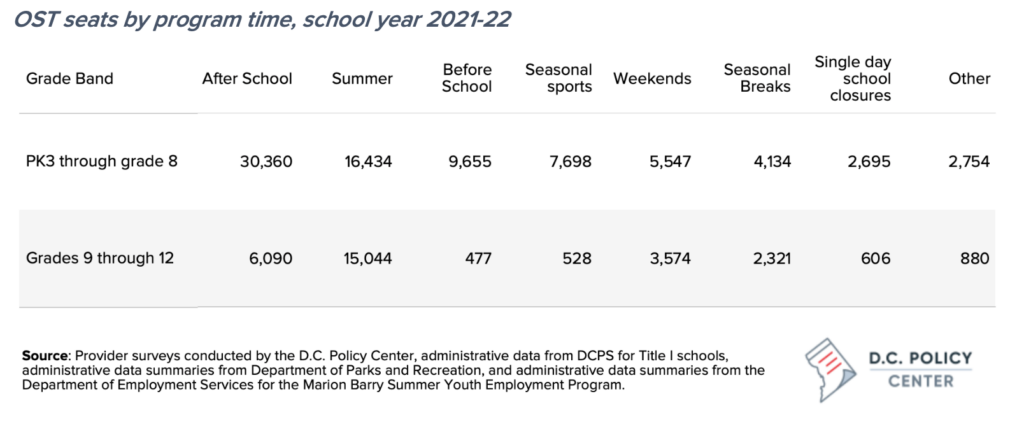

Coverage of OST programs vary by ward and can change when measured against where students live versus where students attend school. The existing subsidized seat capacity in afterschool programs can serve 43 percent of students enrolled in elementary and middle schools, and the existing summer capacity can serve 23 percent of these students. For high school students, the citywide coverage rate is 33 percent for afterschool programs and 35 percent for summer programs (excluding the seats MBSYEP—when those seats are included, the coverage rate goes up to nearly 100 percent).
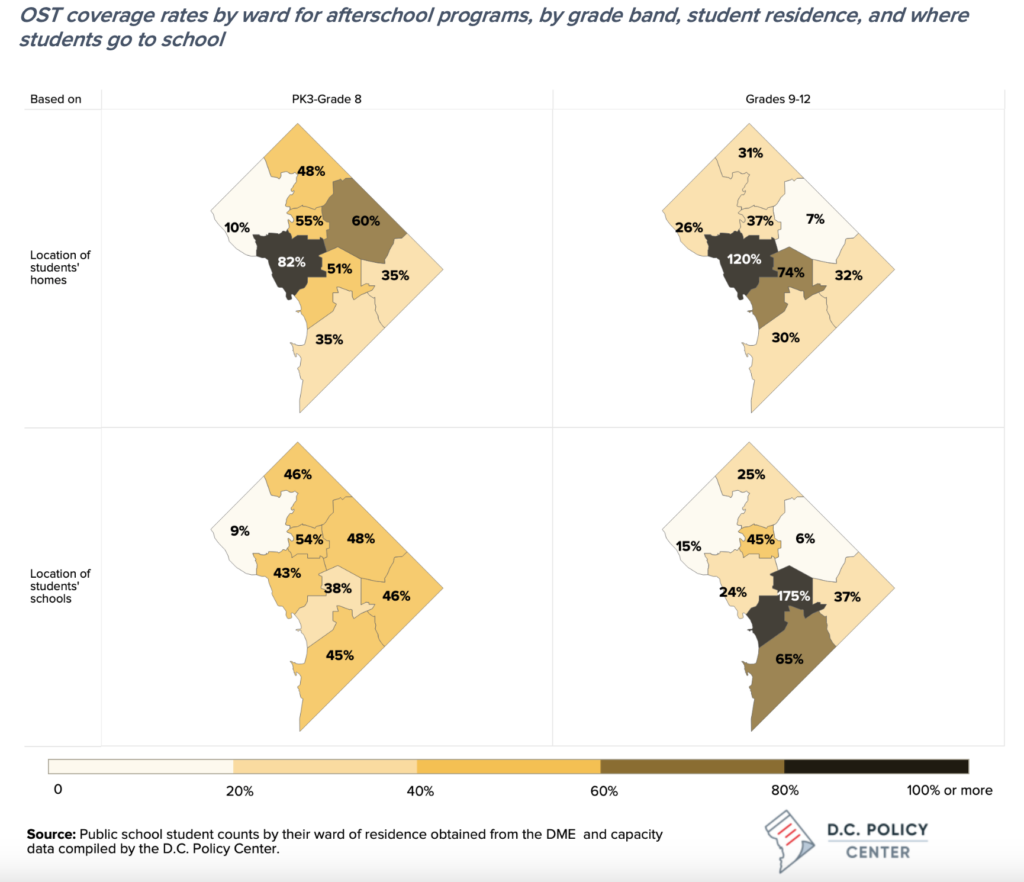

When comparing the number of programs to the number of students geographically, capacity is highest in Wards 1 and 2. While Wards 7 and 8 had the largest number of seats overall, there were less seats available per student on average than in other parts of the city. This is because the highest percentage of students live in those wards, creating greater competition for available seats.
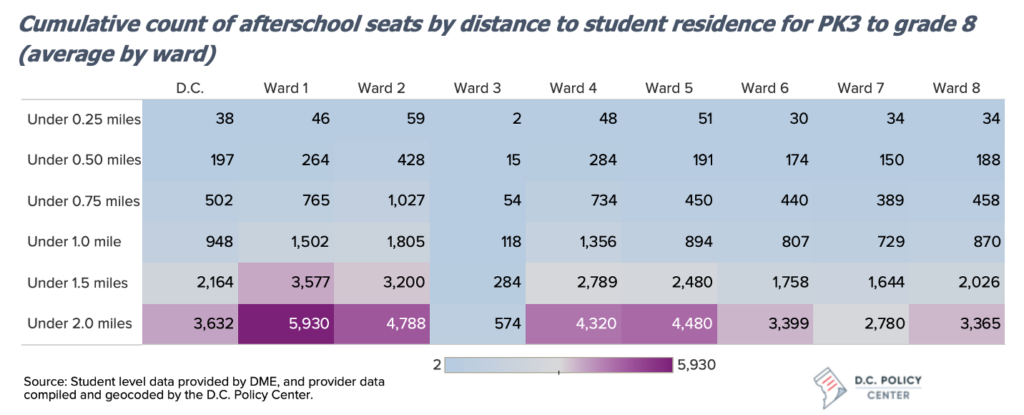

Barriers to entry remain for OST programs, especially for students with special needs. Parents and guardians expressed frustration with finding information on OST programs, getting spots in programs (especially high-quality ones), transportation options, affordability, and ability to meet student’s needs. These problems are particularly potent for students with specific needs, such as English learners and students with disabilities.
We welcome proposed investments in the FY24 budget including My Afterschool DC which would increase outreach and access to OST programs, and investments for OST programming for students with disabilities and special education needs. We hope these funds can increase access to OST programming for students with special needs and can help address the specific needs of students in D.C. A survey of the parent and guardian experience showed that the current Learn24 Program Finder program is not seen as a useful source of information. As such, investments in My AfterschoolDC hub are particularly timely and important.
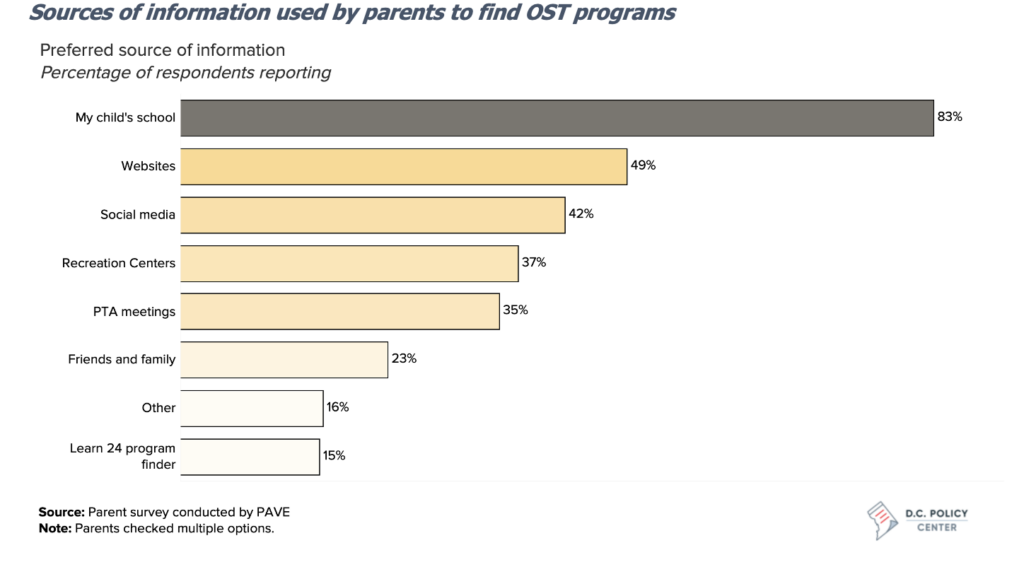

Detailed information about where students in D.C. live and go to school, program locations and characteristics, assessments of need and coverage of OST programs, and the experience of OST providers as well as families can be found in our forthcoming report.
Endnotes
- Afterschool programs have increased from 33,400 seats in 2017 to 36,450 seats in 2022, or approximately a 10 percent increase. Summer programming has increased from 15,000 seats in 2017 to 31,478 seats in 2022, or a 52 percent increase. Coverage rates and seat counts from 2017 can be found in our previous OST report, Needs Assessment of Out-of-School Time Programs in the District of Columbia, found at https://www.dcpolicycenter.org/publications/needs-assessment-school-time-programs-district-columbia/.
